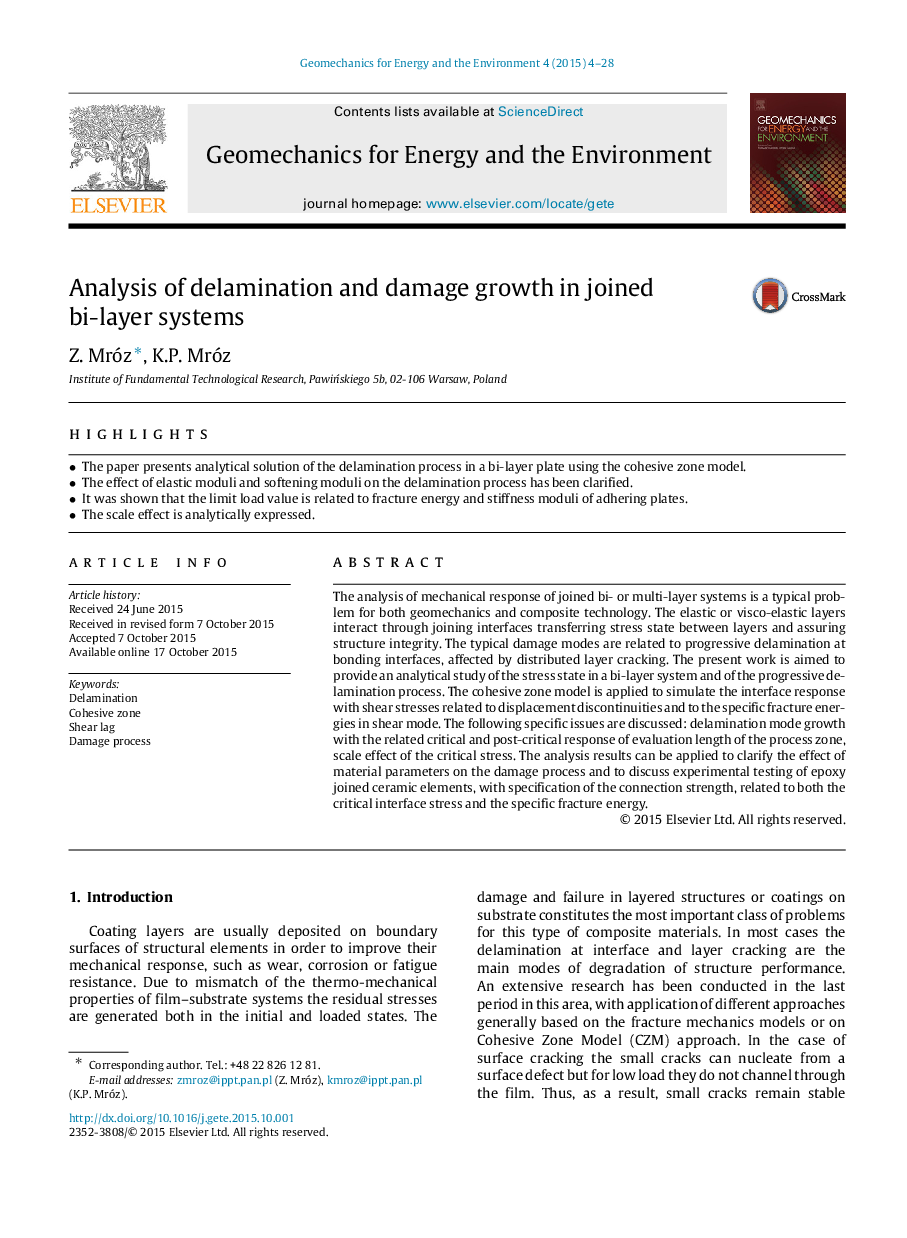| Article ID | Journal | Published Year | Pages | File Type |
|---|---|---|---|---|
| 273935 | Geomechanics for Energy and the Environment | 2015 | 25 Pages |
•The paper presents analytical solution of the delamination process in a bi-layer plate using the cohesive zone model.•The effect of elastic moduli and softening moduli on the delamination process has been clarified.•It was shown that the limit load value is related to fracture energy and stiffness moduli of adhering plates.•The scale effect is analytically expressed.
The analysis of mechanical response of joined bi- or multi-layer systems is a typical problem for both geomechanics and composite technology. The elastic or visco-elastic layers interact through joining interfaces transferring stress state between layers and assuring structure integrity. The typical damage modes are related to progressive delamination at bonding interfaces, affected by distributed layer cracking. The present work is aimed to provide an analytical study of the stress state in a bi-layer system and of the progressive delamination process. The cohesive zone model is applied to simulate the interface response with shear stresses related to displacement discontinuities and to the specific fracture energies in shear mode. The following specific issues are discussed: delamination mode growth with the related critical and post-critical response of evaluation length of the process zone, scale effect of the critical stress. The analysis results can be applied to clarify the effect of material parameters on the damage process and to discuss experimental testing of epoxy joined ceramic elements, with specification of the connection strength, related to both the critical interface stress and the specific fracture energy.
